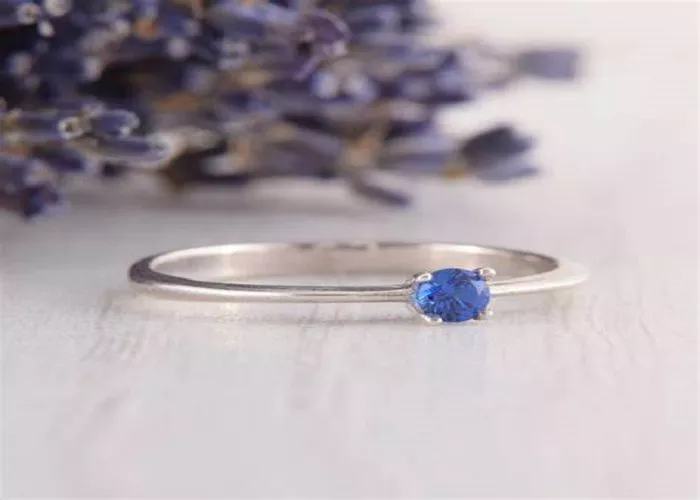Blue Nile’s amethyst necklace pricing reflects its “luxury e-commerce Lite” positioning – reducing costs through scale sourcing and streamlining services, while maintaining certain quality standards. As consumers weigh gem parameters, metal costs and brand value, designers can learn how to balance mass market needs with differentiated innovation.
The price of amethyst necklace
Before analyzing the price of Blue Nile’s amethyst necklace, it is necessary to understand the pricing logic.
As a designer, I believe that the cost and value of jewelry is determined by the following core factors:
Gemstone quality
Color: The value of amethyst is directly related to its color saturation. High value amethysts need to have a deep purple color (such as “Siberian purple”), and have no distinct color bands or gray/brown tones. Blue Nile usually selects stones with medium to high saturation to balance the price.
Clarity: Amethyst natural inclusions are less, but internal cracks or clouds can affect transparency. Blue Nile mostly uses “Eye-Clean” grade stones, which cost less than high clarity diamonds.
Cuts: Commercial grade cuts (such as standard round or oval shapes) cost less, while complex cuts (such as emerald shapes or custom designs) increase processing fees and wear rates.
Carat: The main stone of Blue Nile’s amethyst necklace is between 5 and 15 carats. The unit price of carats increases nonlinearly with size (e.g., 10 carats may cost 2.5 times as much as 5 carats instead of 2).
Metal material and process
Metal type:
Silver: Lowest cost (approx 20 – 50/ oz), but easily oxidized, Blue Nile is rarely used.
Gold (Gold) : 14K gold (approx 40 / G) is the mainstream choice, 18 K Gold (about 40/ g) is the mainstream choice, and 18K gold (about 55/ g) is more luxurious but less hard.
Platinum: High density, strong durability (about $30/ g), but because of the difficulty of processing, the premium is significant.
Metal consumption: the thickness of the chain body and the setting method (such as claw set vs. bag set) directly affect the metal cost. For example, an 18-inch 14K gold chain (2mm thick) requires about 15 grams of gold, and the metal cost alone is about $600.
Design and brand premium
Design complexity: Simple single-stone pendants (such as the classic four-claw set) are low in cost, and additional work is required to lay secondary stones, hollow engravings or custom patterns.
Brand positioning: As a large-scale e-commerce company, Blue Nile’s premium rate (about 30%-50%) is lower than that of luxury brands (such as Tiffany’s 100%-200%), but higher than that of artisanal workshops.
Additional services and certification
Certificate fee: If GIA or IGI certificate is provided, the document cost is approx 50 − 150.
Custom services: Lettering, chain length adjustment or metal replacement are available for an additional fee (usually 50 − 300).
Typical price range of Blue Nile amethyst necklace
According to its website data and designer experience, Blue Nile’s amethyst necklace prices can be divided into three levels:
Entry Level (100 – 100−500)
Material: Gold plated silver or 10K gold, chain length 16-18 inches, lightweight metal (1-5 grams).
Gemstones: 5-8 carats, light in color (lavender), may contain slight inclusions.
Design: Minimalist style, such as a single stone pendant with a box chain.
Example: 10K gold amethyst pendant (8mm round main stone), priced at about $350.
Mid-range (500 – 1,500)
Material: 14K gold or platinum, thickened chain body (5-10 grams).
Gemstone: 10-15 carats, medium dark purple in color, good cut symmetry.
Design: Add secondary stones (such as broken diamond edging) or special shapes (such as hearts/water drops).
Example: 14-karat gold drop-shaped amethyst pendant (with 0.1 carat crushed diamond) for about $1,200.
High-end (one, 500 – 1,500−5,000+)
Material: 18K gold or platinum, exquisite workmanship of the chain body (such as Italian woven chain).
Gemstone: over 15 carats, rare dark purple with high transparency, possibly of rare origin (e.g. Uruguay).
Design: Custom or limited edition, incorporating complex Mosaic or artistic elements.
Example: Platinum amethyst necklace (20 carats of main stone +0.5 carats of diamond enclosing), priced around $3,800.
Horizontal comparison with competitive products
As a designer, Blue Nile should be placed in the market to analyze its price competitiveness:
Popular brands (e.g. Kay Jewelers, Zales)
Price: Similar products are 10%-20% lower than Blue Nile, but the metal thickness and gem quality are generally reduced.
Advantages: physical store experience; Disadvantage: homogenization of design.
Luxury brands (such as Tiffany, Cartier)
Price: Premium of 2-3 times for similar specifications (such as Tiffany amethyst pendant from about $2,500).
Advantages: brand history and process details; Disadvantage: Low cost performance.
Handmade custom brand (such as Etsy independent designer)
Price: Large span (200 −3,000), depending on the designer’s popularity.
Advantages: unique and personalized service; Disadvantage: Quality stability risk.
Purchase advice to consumers
From the perspective of design, it is recommended that users choose according to their needs:
Daily wear: Selected end grade 14K gold, balance durability and beauty.
Collection or gift: Give priority to high color grade amethyst + certificate to avoid excessive investment brand premium.
Limited budget: Choose silver gold plated or small carat main stone, later can upgrade the chain body.
Designer Perspective: How to optimize cost and value
If you design similar products yourself, you can enhance your competitiveness through the following strategies:
Alternative materials: The use of 14K gold-coated silver process to reduce metal costs.
Direct production: Cooperate with Brazilian or Zambian mining areas to reduce middleman markup.
Modular design: Provides replaceable pendant and chain body combination for increased flexibility.
Conclusion
Amethyst necklaces at Blue Nile typically range from depending on factors like stone size, quality, metal type (sterling silver, gold, or platinum), and design complexity, with simpler silver pendants starting under $200 and elaborate gold designs costing significantly more
Related topics:
Amethyst Colors Explained: From Lavender to Deep Purple
How to Charge Your Amethyst: A Comprehensive Guide
How to Grow Your Own Amethyst Crystals at Home?


